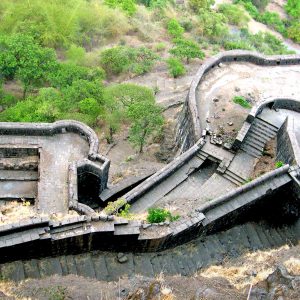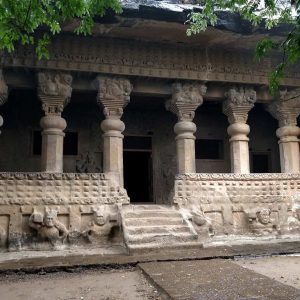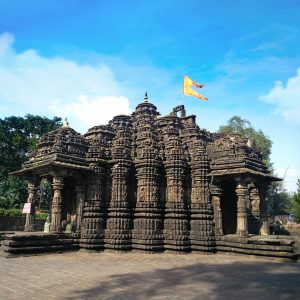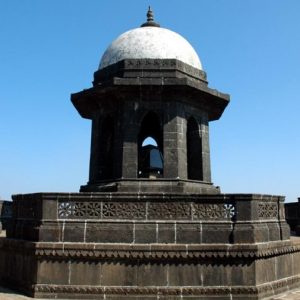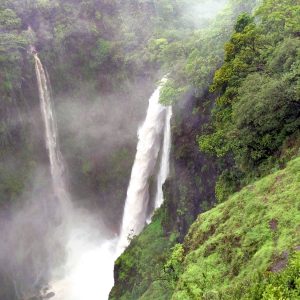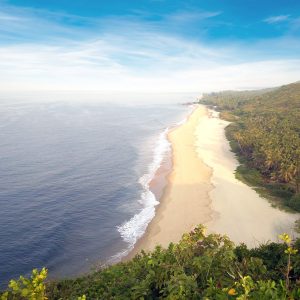DURG BHARARI
Bhatkanti Maharashtrachi Sath Durgbharari Chi.
The land of Maharashtra is made of cold lavatars. According to geology this phenomenon was caused by a natural eruption about seven million years ago. The earliest reference to the word 'Maharashtra' is found in a small inscription in Eran in Madhya Pradesh. From this it is known that the name of Maharashtra is as ancient as the fourth century AD. Maharashtra generally consists of 7 divisions like Konkan, Desh, Ghatmatha, Maval, Khandesh, Marathwada and Vidarbha. Sahyadri mountain range is spread over 35 to 50 kilometers away from the seashore. The narrow land between the Sahyadri and the sea is called the Konkan.
...
The eastern part of the Sahyadri region is known as Desh whereas the high portion of the Sahyadri mountain is known as Ghatamatha. Due to descending hills of Sahyadri the area which has been created called as Maval. Dhule, Nandurbar and Jalgaon areas of North Maharashtra are known as Khandesh and Godavari basin is known as Marathwada. Vidarbha and Varahad areas come to the valley of the rivers of Purna, Wardha, Penganga and Wenganga. The history Maharashtra's is associated with Sahyadri, the unbeatable remote fortresses and ancient civilizations of this region. Sahyadri is the backbone of Maharashtra. Continuously approaching to east Satpuda's mountain ranges are connected with sahyadri. These two mountain ranges protect the South Plateau of maharashtra. There are many forts stand on head of Sahayadri and Satpuda's. Along with this many temples are built on the hills of sahyadri & satpuda mountain range. More than 1000 caves can be found in Maharashtra out of 1500 caves throughout India. This lime carved in the Sahyadri belt reveals the ancient beauty of ancient times. Sahyadri has received strength and beauty with huge rocks, high peaks and dense forest. Although the temples here in Maharashtra are scattered all over and have been destroyed very often in times of violence and in the course of time, architectural status is seen in many temples of fourth century, such as Ambernath, Gondeshwar, Tahakari, Jageshwar and Ambhai. Though the construction of the buildings of the fortress and the fortress is spectacular still the utility is most important here. The caves in heart of Sahyadri's are beauty treatises of Maharashtra whereas the forts on the top of hills are power & fortunate of Maharashtra. Gharapuri sculpture craft is seen as a symbol of Maharashtra's tourism department. Ajanta caves and painting in caves are well known throughout world. The Verul cave is the salute to the Maharashtra's stone sculpture. By its forts the medieval period has added more Beauty property & importance to ancient times. The forts walls, bastions and doors are not only decorated with beauty but also equipped with power. Maharashtra has various types of forts such as Hill fort, Forest Fort, Land fort and water fort is the never-ending reservoir of the forts. A fort on standing on Sahyadri peaks like Rajgad, Raigad, Pratapgad and Purandar, Fort in dense forest like fort Vasota, Mudagad, fort like Devgiri alias Daulatabad near Aurangabad, land fort like Chakan Sangramadurg, and water fort such as Janjira, Sindhudurg etc.are in Maharashtra. When we talk about fort its directly connected to Chhatrapati Shivaji Maharaj. Even though the Maratha kingdom is a stronghold on fort in period of Shivaji maharaj we canot the neglect of the fortification done by Satvahan, Rashtrakoot, Shilahar, Bahmani, Mughal and Portuguese. Shivaji maharaj’s period was the golden age of the construction and use of the forts. The highest invention and technique of fortification found in fort built by Shivaji Maharaj. The number of forts, temples, caves, monuments in Maharashtra’s are in thousands. So let's start to visit the beauty of Maharashtra.
© Suresh Nimbalkar
Let's Explore
Pride of Maharashtra
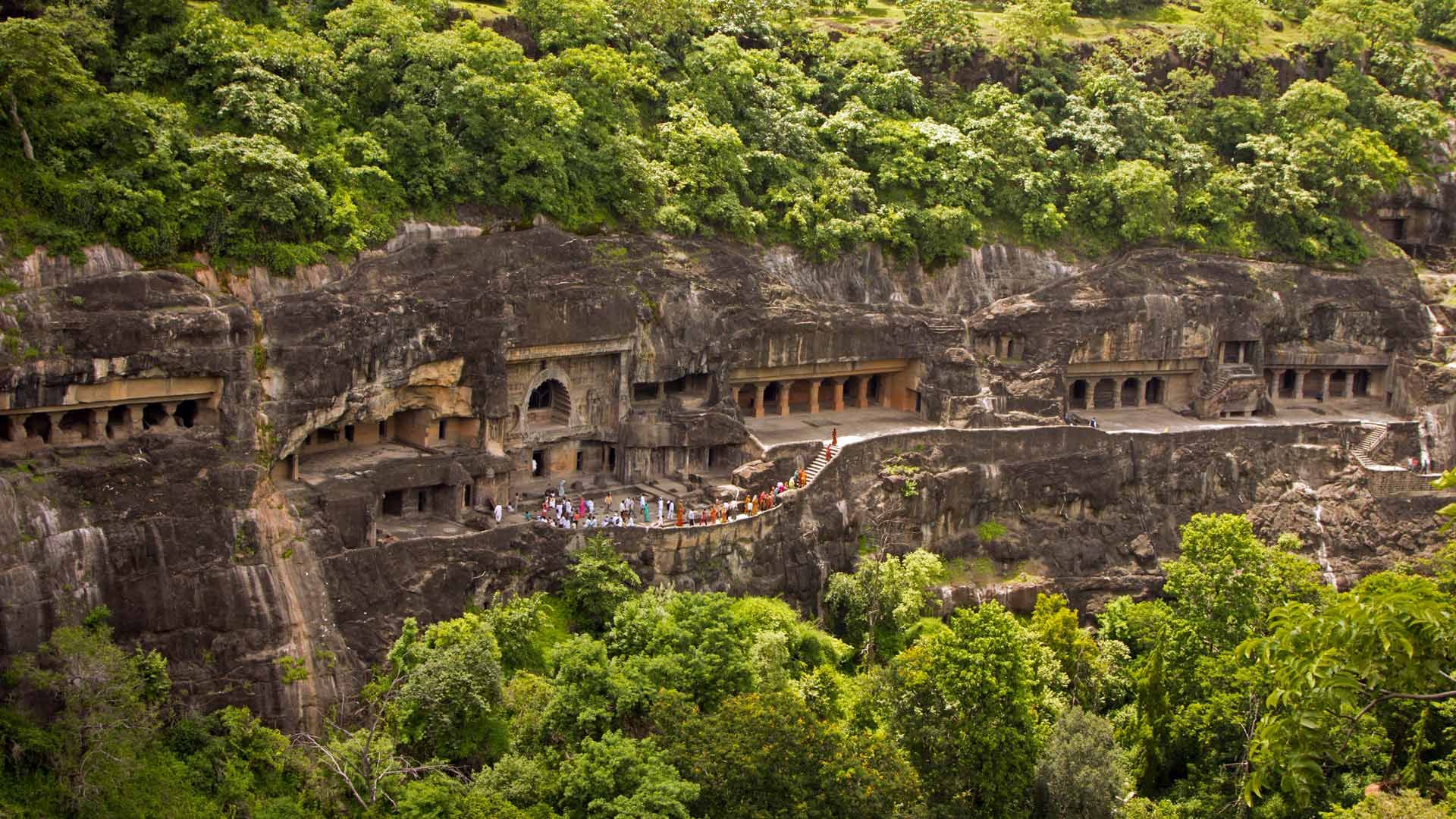
Our Heritage
Worship Places

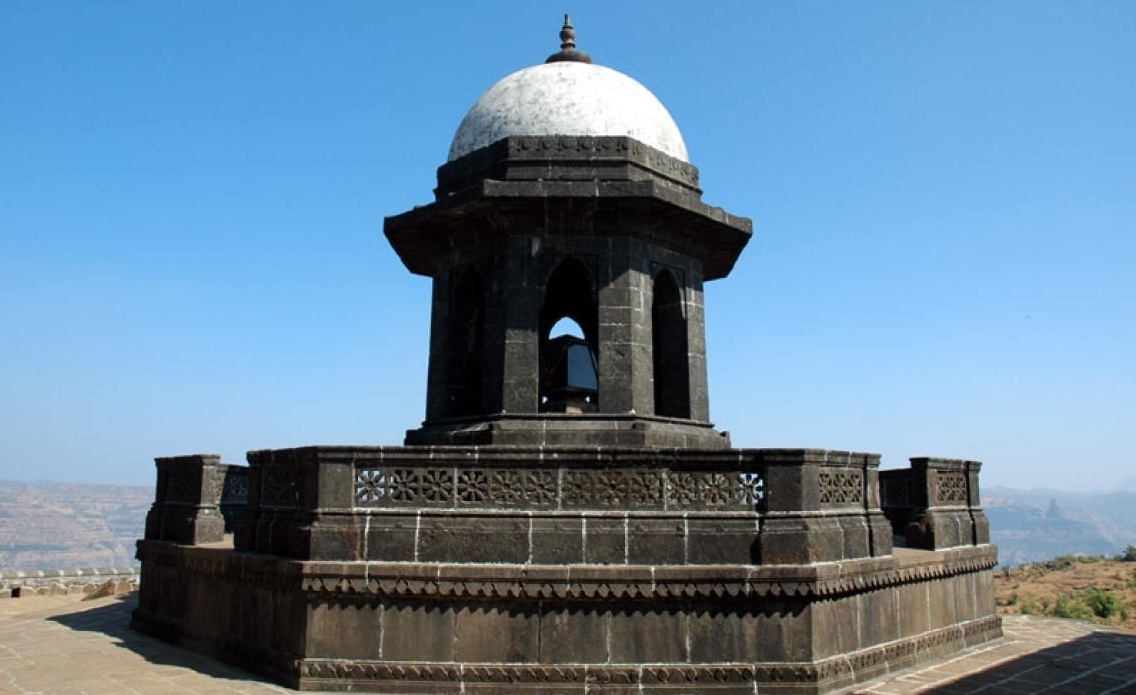
Our Inspiration
Mother Nature


